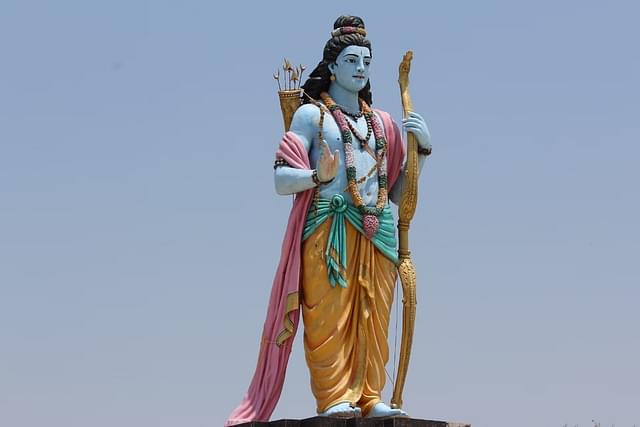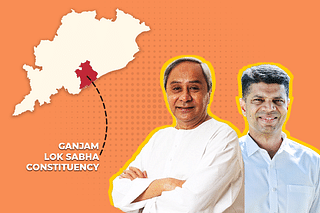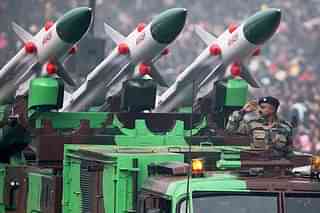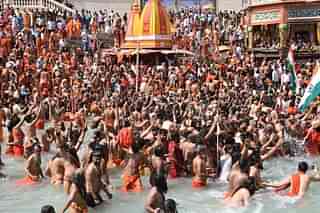Economy
Required: Karseva For Economic Success
R Jagannathan
Jan 16, 2024, 02:19 PM | Updated 04:00 PM IST
Save & read from anywhere!
Bookmark stories for easy access on any device or the Swarajya app.

As we head towards the 22 January inauguration of the bhavya Ram mandir in Ayodhya, there has been a tendency to take what has been achieved, for granted. There is also a persistent whisper among hard-core Hindutva voters, indicating impatience with the slow progress towards Hindu Rashtra.
There is an implicit assumption that the Narendra Modi government’s broader pro-poor economic agenda is nice to have, but not quite relevant to their agenda.
Any rush towards Hindu Rashtra without taking care of the people’s well being will lead us to disaster. India faces multiple economic challenges. There is a paucity of good quality jobs, thanks to the replacement of labour with robots and automation.
The economy will face headwinds in the coming years as two global wars — the Russia-Ukraine one, and the brutal Israel-Hamas conflict — threaten to draw others into it.
The US, Europe, Japan and China have been busy printing endless amounts of money to keep their economic growth in positive territory, but sooner than later, someone will have to pick up the bills. In this situation politicians look to conflicts to win elections.
India is one of those rare cases which not only managed its Covid challenges well, but also the connected fiscal ones. But this performance is fragile due to the deteriorating external political and economic crises.
Internally, there is also the possibility that opposition parties will use every subsidy we cannot quite afford to buy voter loyalties and defeat Modi. We could just as easily land in another economic mess, with negative consequences for growth and jobs. If that happens, you can forget about Hindutva.
Our defence needs are also growing in this era of hybrid warfare, where China has a huge lead in cyber warfare and technology. With Uncle Sam showing no signs of maturity in managing its relationship with India with a sense of balance and mutual respect, we are essentially on our own in defending our borders.
The Modi government has been steadily shifting its defence procurement needs to domestic suppliers, but this process of ‘atma nirbharta’ (self-reliance) will take time to fructify — possibly another 10-15 years.
As we target a $5 trillion economy in another four years, and possibly $10 trillion by the mid-2030s, our window of vulnerability to external and internal threats remains large. Navigating these headwinds and vulnerabilities needs India to build a strong state, and ensure that the vast majority of its people are not only lifted out of poverty, but also see regular improvements in their economic situation.
There will be no Hindu Rashtra or Ram Rajya in India if we cannot show significant improvements in our economic and social indicators over the next 10 years. As Swami Vivekananda once said, if you see a person starving on the road and start preaching about the larger goals of life, he will say give me food and not a lecture. Mahatma Gandhi also made the same point when he said that for the poor man, food is god.
In fact, our shastras clearly mention that human goals need a balance between the four purusharthas — Dharma (pursuit of righteous living), Artha (pursuit of wealth and economic progress), Kama (pursuit of one’s desires) and Moksha (liberation from the cycle of rebirth).
What applies to individuals applies equally to the country. The pursuit of Ram Rajya involves not only the pursuit of Dharma, but economic success too. In the case of the nation, the four purusharthas are a commitment to ethical conduct by state and citizen, pursuit of economic success using fair means, access to essential and even some luxury consumer goods by the vast majority of our people, and liberating most people from basic needs where they can pursue Dharma and spiritual goals — if that is what they want.
While the exact mix in the pursuit of the four purusharthas depends on the life-stage of the individual or the country, economic well-being must have priority at this stage in a country with a per capita income of just above $2,000. The pursuit of Ram Rajya, political Hindutva and spiritual goals will follow once we cross the $5,000-$8,000 stage.
The Chanakya Sutra has much the same broad advice to offer. It says:
Sukhasya Moolam Dharmah,
Dharmasya Moolam Arthah,
Arthasya Moolam Rajyam...
This is loosely translates as: Happiness flows from the pursuit of Dharma, or righteousness; Dharma is built on the foundation of wealth and sound economics; and sound economics needs a strong state to enable it all. There are many more verses in the Chanakya Sutra, but these capture the essence of what we need to do.
In the two terms in which Narendra Modi has been Prime Minister, we saw India opt for bold reforms with the long-term potential to change our growth trajectory for the better.
While demonetisation hurt the cash-based parts of the economy, it set the stage for a shift to digital payments — something that came in very handy during the Covid pandemic when human contact was itself seen as problematic in order to prevent the spread of the disease. Digitisation enabled a clean-up in the subsidy delivery system to beneficiaries, removing most of the leakages caused by corruption.
The use of Jan Dhan bank accounts, Aadhaar IDs and mobile phones created the JAM trio that strengthened the Indian state’s competence to do many things beyond subsidy delivery. This includes the ability to track crime and criminals. It enabled the state to manage a competent response to Covid, and will now do even more in our journey to become a developed economy by 2047.
A strong state, it cannot be over-emphasised, is built on the ability to get things done competently. This state competence is now broadly in place.
Then we had the Insolvency and Bankruptcy Code, which enabled banks to recover some of their bad loans from failing or failed companies. This caused a temporary blip in lending and growth, as both banks and companies sought to deleverage their balance-sheets, but in 2023, India probably has the healthiest banking systems among major economies.
In the US, many banks failed, but in India, our big banks are in rude good health. Today, using Mudra loans and fintech apps, the 'pakora seller' can keep herself employed without doles, and the street vendor can access finance to grow his small business. At the other end of the spectrum, India now has more than 100 unicorns, companies with more than a billion-dollar valuation.
Then we had the goods and services tax (GST), which has, after a few initial hiccups, delivered higher tax revenues in spades. Once this is extended to more and more products (ie, excluding everyday essentials), rates can be rationalised, and our monthly revenue run rate of more than Rs 1.6 lakh crore could easily cross Rs 2 lakh crore by the end of the next fiscal. That is provided the 2024 election brings back the man who can get that done.
So what is the connection between Ram Rajya and economic well-being? The latter has to precede the former. It is worth recalling how many millions of Hindus made sacrifices to make the Ayodhya temple a reality. But we tend to forget the Mandal riots of the late 1980s, which set one Hindu against another.
But once the Other Backward Classes (OBCs) got their quotas in educational institutions and jobs, suddenly they were more gung-ho about their core Hindu identity. Identity begins to matter only after a certain improvement in economic change. The Bharatiya Janata Party got the message and quickly made OBCs a core political constituency.
Between the upper castes and OBCs, there is now a hard core Hindu constituency that is concerned about identity and civilisational heritage, but many Dalits and Vanvasis are still not fully sold on this idea, with economic progress being their primary concern. It is only when economic progress reaches them in full measure they will join the Hindu bandwagon.
We began this journey sometime in the 1980s, when the two epics, Ramayan and Mahabharat, were serialised on Doordarshan. They provided the trigger for our efforts to reconnect with our 5,000-year-old civilisational heritage. We realised that India was not born in 1947, but that the seeds of Bharat were sown millennia ago from the Vedic age downwards.
We need to remember that today. Hindu Rashtra is a journey, not a destination. And this journey will get rudely interrupted if sound economics and efforts to lift people out of poverty are not prioritised.
There is a two-way link between the Ram Temple and economic improvement. The temple, as it brings millions of devotees, will improve the economy of eastern Uttar Pradesh. But this improvement will also bring in more devotees. Dharmasya moolam Arthah can also be written in reverse.
Save & read from anywhere!
Bookmark stories for easy access on any device or the Swarajya app.
Jagannathan is Editorial Director, Swarajya. He tweets at @TheJaggi.
Support Swarajya's 50 Ground Reports Project & Sponsor A Story
Every general election Swarajya does a 50 ground reports project.
Aimed only at serious readers and those who appreciate the nuances of political undercurrents, the project provides a sense of India's electoral landscape. As you know, these reports are produced after considerable investment of travel, time and effort on the ground.
This time too we've kicked off the project in style and have covered over 30 constituencies already. If you're someone who appreciates such work and have enjoyed our coverage please consider sponsoring a ground report for just Rs 2999 to Rs 19,999 - it goes a long way in helping us produce more quality reportage.
You can also back this project by becoming a subscriber for as little as Rs 999 - so do click on this links and choose a plan that suits you and back us.
Click below to contribute.





